| |||||
| Centuries: | |||||
|---|---|---|---|---|---|
| Decades: | |||||
| See also: | Other events of 1580 List of years in Ireland | ||||
Events from the year 1580 in Ireland.
| |||||
| Centuries: | |||||
|---|---|---|---|---|---|
| Decades: | |||||
| See also: | Other events of 1580 List of years in Ireland | ||||
Events from the year 1580 in Ireland.
| | This section is empty. You can help by adding to it. (October 2012) |
Sir William Stanley, son of Sir Rowland Stanley of Hooton and Margaret Aldersy, was a member of the Stanley family, Earls of Derby. He was an officer and a recusant, who served under Elizabeth I of England and is most noted for his surrender of Deventer to the Spanish in 1587.
"Follow Me Up to Carlow" is an Irish folk song celebrating the defeat of an army of 3,000 English soldiers by Fiach Mac Aodh Ó Broin at the Battle of Glenmalure, during the Second Desmond Rebellion in 1580.
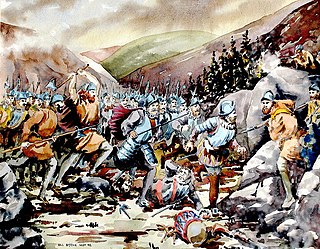
The Battle of Glenmalure took place in Ireland on 25 August 1580 during the Desmond Rebellions. A Catholic army of united Irish clans from the Wicklow Mountains led by Fiach MacHugh O'Byrne and James Eustace, 3rd Viscount Baltinglass of the Pale, defeated an English army under Arthur Grey, 14th Baron Grey de Wilton, at Clan O'Byrne's mountain stronghold of Glenmalure.
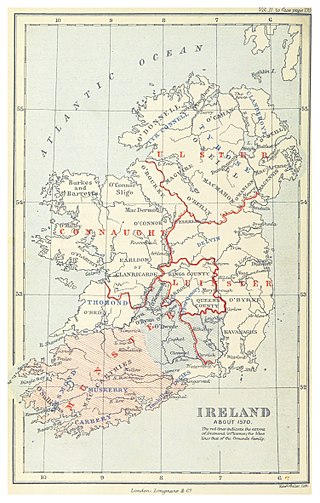
The Desmond Rebellions occurred in 1569–1573 and 1579–1583 in the Irish province of Munster. They were rebellions by the Earl of Desmond, the head of the FitzGerald dynasty in Munster, and his followers, the Geraldines and their allies, against the threat of the extension of the English government over the province. The rebellions were motivated primarily by the desire to maintain the independence of feudal lords from their monarch but also had an element of religious antagonism between Catholic Geraldines and the Protestant English state. They culminated in the destruction of the Desmond dynasty and the plantation or colonisation of Munster with English Protestant settlers. 'Desmond' is the Anglicisation of the Irish Deasmumhain, meaning 'South Munster'.

The Rt Hon. Arthur Grey, 14th Baron Grey de Wilton, KG (1536–1593), was a baron in the Peerage of England. Lord Grey de Wilton is now largely remembered for his memoir of his father, for participating in the last defence of Calais (1558), and for his involvement in the massacre after the Siege of Smerwick (1580) on Corca Dhuibhne in County Kerry. He served as Lord Deputy of Ireland from 1580 until 1582.

Fiach mac Aodha Ó Broin was Chief of the Name of Clann Uí Bhroin and Lord of Ranelagh during the Elizabethan wars against the Irish clans.
James fitz Maurice FitzGerald, called "fitz Maurice", was a native Irish and Anglo-Norman captain-general of Desmond while Gerald FitzGerald, 14th Earl of Desmond, was detained in England by Queen Elizabeth after the Battle of Affane in 1565. He led the first Desmond Rebellion in 1569 and was sometimes called the "Archtraitor" by the English. He surrendered in 1573, prostrating himself in Kilmallock church before John Perrot, president of Munster.

Glenmalure is a 20-kilometre long U-shaped glacial valley in the Wicklow Mountains in Ireland. Glenmalure is an important base for climbing in the Wicklow mountains, and particularly accessing the massif of Lugnaquilla, and contains one of the earliest An Óige youth hostels in Ireland. Glenmalure was also an important historical area and the site of the Battle of Glenmalure in 1580, as well as various events in the Irish Rebellion of 1798.
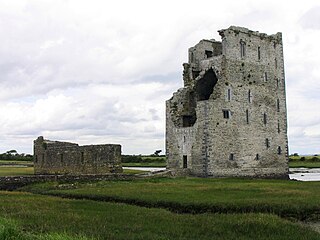
The siege of Carrigafoyle Castle took place on Easter in 1580 near modern-day Ballylongford, County Kerry, Ireland, on the southern bank of the Shannon estuary. The engagement was part of the English crown's campaign against the forces of Gerald FitzGerald, 14th Earl of Desmond during the Second Desmond Rebellion. The castle was held by rebel troops in the service of Desmond and some Catholic troops from continental Europe.
The Second Desmond Rebellion (1579–1583) was the more widespread and bloody of the two Desmond Rebellions in Ireland launched by the FitzGerald Dynasty of Desmond in Munster against English rule. The second rebellion began in July 1579 when James FitzMaurice FitzGerald landed in Ireland with a force of Papal troops, triggering an insurrection across the south of Ireland on the part of the Desmond dynasty, their allies, and others who were dissatisfied for various reasons with English government of the country. The rebellion ended with the 1583 death of Gerald FitzGerald, 14th Earl of Desmond, and the defeat of the rebels.
Events from the year 1582 in Ireland.
Events from the year 1592 in Ireland.
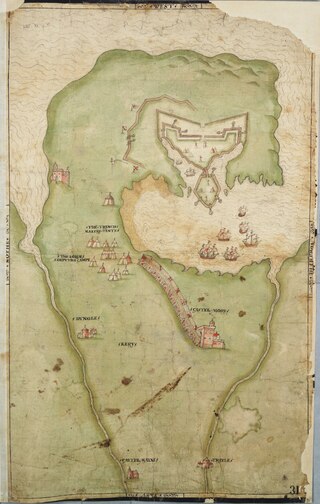
The siege of Smerwick took place at Ard na Caithne in November 1580, during the Second Desmond Rebellion in Ireland. A force of between 400 and 700 Papal freelance soldiers, mostly of Spanish and Italian origin, landed at Smerwick to support the Catholic rebels. They were forced to retreat to the nearby promontory fort of Dún an Óir, where they were besieged by the English. The Papal commander parleyed and was bribed, and the defenders surrendered within a few days. The officers were spared, but the other ranks were then summarily executed on the orders of the English commander, Arthur Grey, the Lord Deputy of Ireland.
James FitzEustace of Harristown, 3rd Viscount Baltinglass (1530–1585) James FitzEustace, the eldest son of Rowland Eustace, 2nd Viscount Baltinglass and Joan, daughter of James Butler, 8th Baron Dunboyne.
Sir Nicholas Malby (1530?–1584) was an English soldier active in Ireland, Lord President of Connaught from 1579 to 1581.

Sir Edmund Butler of Cloughgrenan, was an Irish noble and the second son of James Butler, 9th Earl of Ormond and Lady Joan Fitzgerald. He was a scion of the House of Ormond, and a rebel against the Tudors.
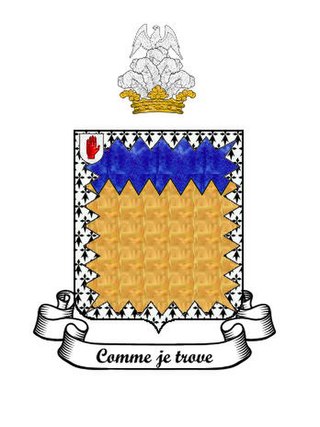
Sir Thomas Butler, 1st Baronet of Cloughgrenan (c.1578–1642), was an Irish nobleman, the illegitimate son of Sir Edmund Butler of Cloughgrenan (1534-c.1585) and grandson of James Butler, 9th Earl of Ormond and 2nd Earl of Ossory (c.1496-1546).
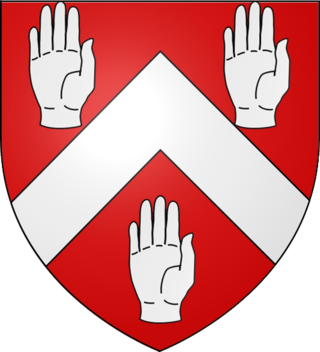
The O'Byrne family is an Irish clann that descend from Bran mac Máelmórda, King of Leinster, of the Uí Faelain of the Uí Dúnlainge. Before the Norman invasion of Ireland they began to colonise south Wicklow. There are many famous people with this Irish last name. This includes Anna O’Byrne, an Australian singer and actress, and Anna Marie O’Byrne, an American model.
The sack of Youghal was the capture of the English-held town of Youghal by Irish rebel forces under the command of the Gerald FitzGerald, the 14th Earl of Desmond on 13 November 1579 as part of the Second Desmond Rebellion. Youghal, a town in the Irish province of Munster, was controlled by the English, making it a target to Irish rebel forces during the rebellion. FitzGerald led an Irish rebel force which captured the city, massacred the English Army garrison, and sacked the town. After news of the sack became known, numerous reprisals were carried out on Catholic non-combatants throughout Ireland.